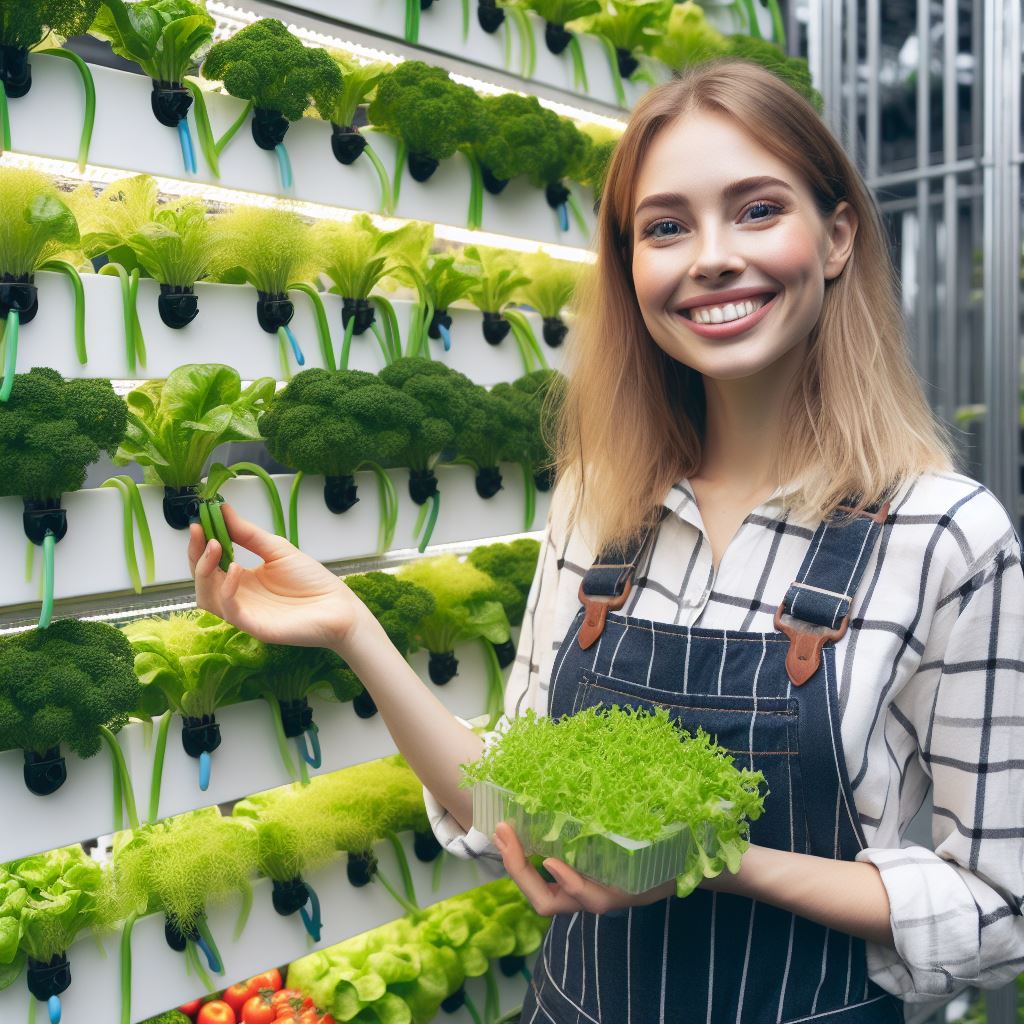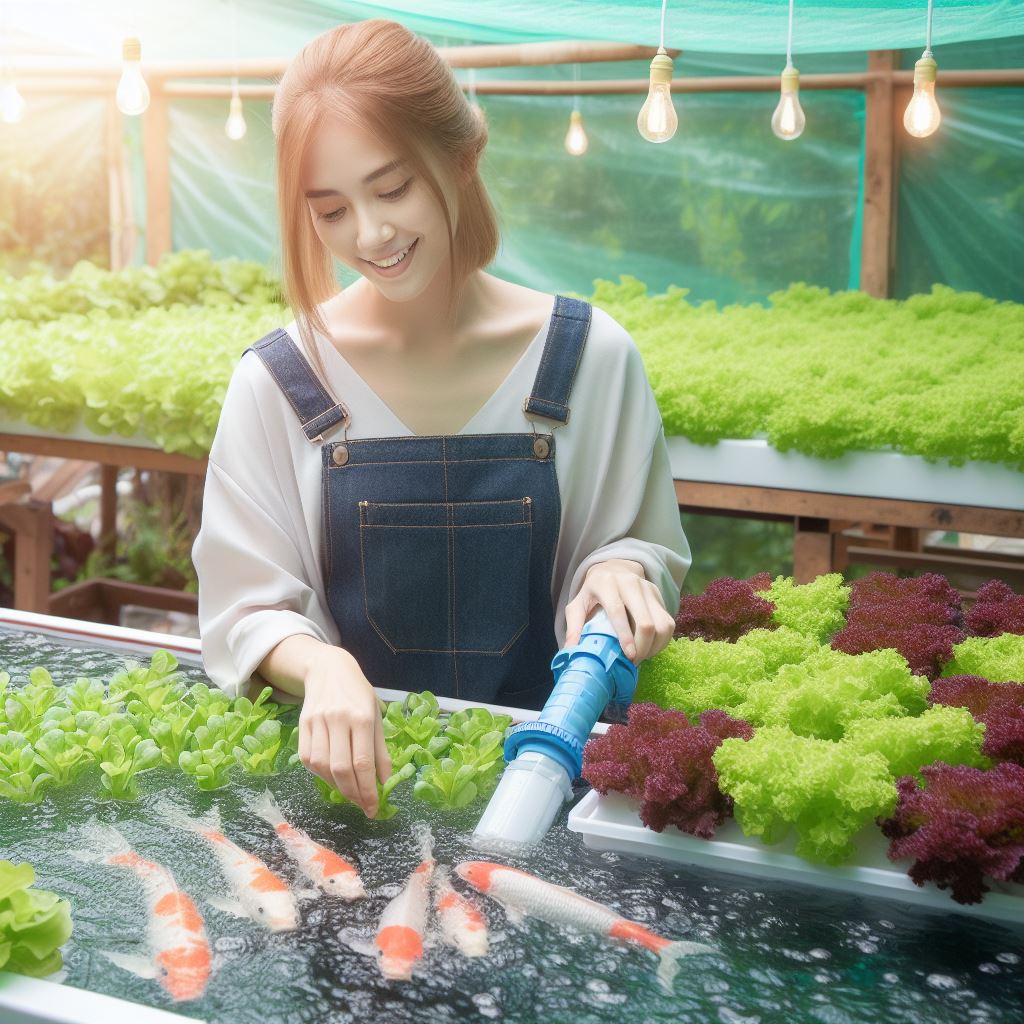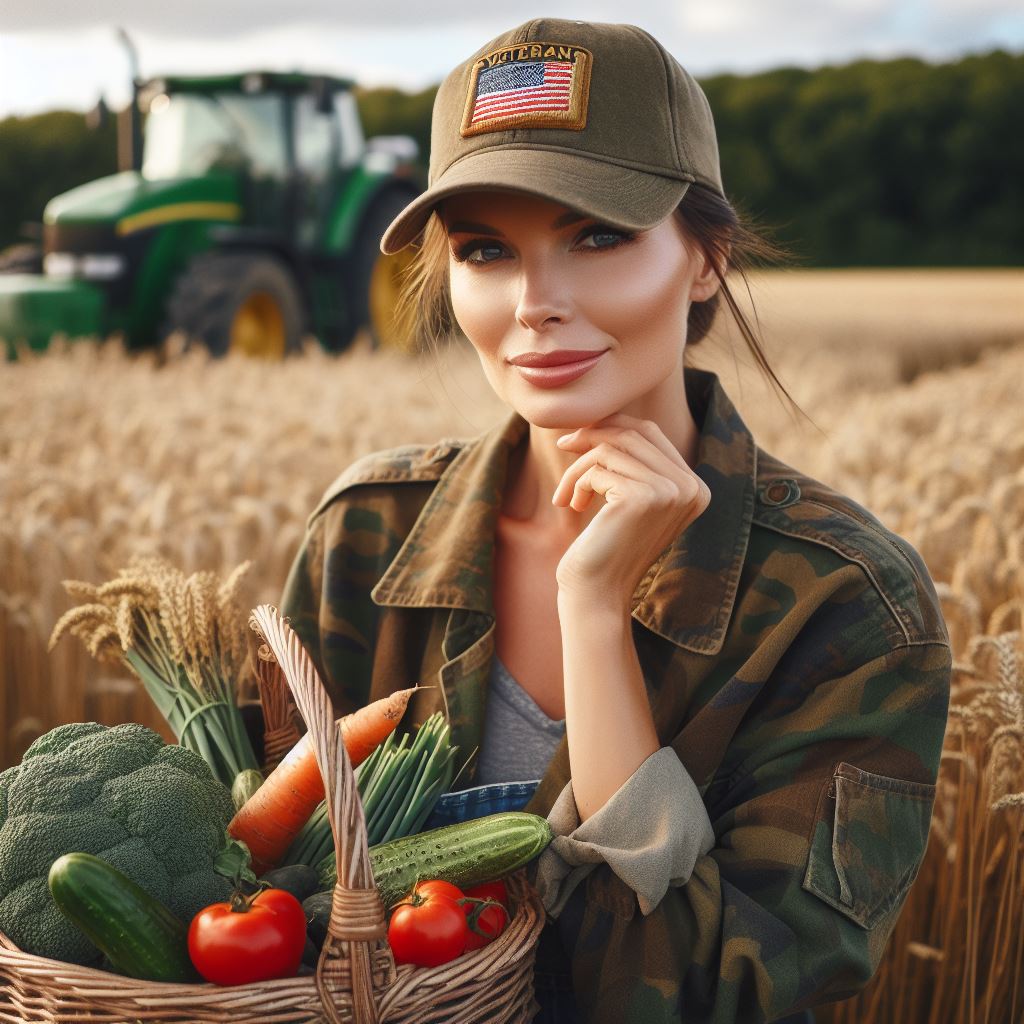Introduction
Vertical farming is a revolutionary method of growing crops in vertically stacked layers.
It involves using controlled environments, such as high-rise buildings or skyscrapers, to cultivate plants without relying on traditional agricultural practices.
This approach has gained significant attention in recent years due to its potential to address key challenges in modern agriculture.
High-rise farming offers numerous advantages over conventional farming methods.
Firstly, it allows for efficient use of limited space, making it possible to grow crops in urban areas where land availability is scarce.
This means that fresh produce can be grown closer to the point of consumption, reducing transportation costs and carbon emissions.
Vertical farming eliminates the need for pesticides and herbicides, as the controlled environment minimizes the risk of pests and diseases.
It also reduces water consumption significantly, as water can be recirculated and reused within the system.
The purpose of this blog post is to explore the benefits and challenges associated with vertical farming.
While the advantages are clear, there are also obstacles that need to be addressed.
These include high initial investment costs, technological complexities, and energy requirements to maintain the optimal conditions for plant growth.
Despite these challenges, vertical farming holds immense potential for the future of agriculture.
It has the ability to improve food security, reduce environmental impacts, and enhance the sustainability of our food systems.
In the following sections, we will delve deeper into the benefits and challenges of vertical farming, providing a comprehensive overview of this innovative approach to farming.
Benefits of Vertical Farming
In today’s blog section, we will be discussing the benefits of vertical farming.
Vertical farming is a revolutionary method of growing crops in a vertical arrangement, making the most out of limited space in urban areas.
By utilizing rooftops, walls, and other vertical surfaces for cultivation, vertical farming offers numerous advantages.
One of the main benefits of vertical farming is maximizing limited space in urban areas.
Urban areas are often densely populated with little available land for traditional farming methods.
However, vertical farming allows for the growth of crops in a vertical arrangement, effectively utilizing the vertical dimension of buildings.
This innovative approach solves the problem of limited space, enabling urban farmers to produce crops in densely populated areas.
With stackable systems and multi-level cultivation, vertical farming maximizes the productivity of each square meter of space.
Traditional farming methods often require large expanses of land to achieve significant crop yield.
In contrast, vertical farming concentrates crops in a vertical arrangement, allowing for higher crop density and increased yield.
With the crops grown in a controlled environment, vertical farming optimizes the use of resources.
The water and nutrients required for cultivation are efficiently distributed to the crops, minimizing wastage.
Vertical farming, on the other hand, brings farming closer to urban centers, reducing the need for long-distance transport.
In short, vertical farming offers numerous benefits that make it an appealing solution for urban areas.
By maximizing limited space, increasing crop yield, and efficiently using resources, vertical farming addresses the challenges of food production in densely populated regions.
It reduces transportation costs and the carbon footprint associated with long-distance transport.
As cities continue to grow and available land diminishes, vertical farming presents a sustainable and efficient solution for cultivating crops.
Read: Young Farmers: Breaking New Ground
Challenges of Vertical Farming
Vertical farming presents a promising solution to the growing need for sustainable and efficient agriculture.
It also brings along several challenges that need to be overcome for its widespread adoption.
Initial investment and operational costs
One of the main challenges of vertical farming is the initial investment and operational costs involved.
High-tech equipment and infrastructure are crucial for creating optimal growing conditions in vertical farms.
These expenses can be significant, making it essential for farmers to secure sufficient funding or financing to start and sustain their vertical farming operations.
The energy requirements for maintaining proper lighting and climate control in vertical farms can be substantial, further adding to the operational expenses.
Technical knowledge and expertise
Another challenge lies in the technical knowledge and expertise required for successful vertical farming.
Monitoring and managing vertical farms require a skilled workforce with a deep understanding of plant biology, hydroponics, and vertical farming techniques.
These professionals need to constantly update their knowledge and adapt to new technologies and innovations in the industry to ensure efficient and sustainable farming practices.
Potential limitations in crop variety and size
Vertical farming may have limitations in terms of crop variety and size.
Adjustments may be necessary to accommodate large crops such as trees or fields within vertical farming systems.
The design and infrastructure of vertical farms need to be flexible enough to support diverse crop types without compromising their growth and productivity.
Additionally, compatibility with different plant species is a crucial consideration, as some plants may not thrive in the controlled environment of vertical farms, requiring further research and experimentation.
Despite these challenges, vertical farming offers numerous benefits, including optimized land and resource utilization, reduced transportation costs, and the potential for year-round crop production.
Overcoming the initial hurdles and investing in the necessary technologies and expertise can lead to significant long-term advantages in terms of food security, environmental sustainability, and economic growth.
Basically, while vertical farming has its share of challenges, addressing them through innovation, collaboration, and continued research can pave the way for a successful and sustainable future in agriculture.
With adequate investment, technical knowledge, and flexibility in crop selection, vertical farming can revolutionize the way we produce food, ensuring a greener and more resilient future for generations to come.
Transform Your Agribusiness
Unlock your farm's potential with expert advice tailored to your needs. Get actionable steps that drive real results.
Get StartedRead: Women in Farming: Unique Challenges

Technological Innovations in Vertical Farming
Technological advancements have revolutionized the field of vertical farming, making it a sustainable and efficient method of food production.
In this section, we will explore some of the key technological innovations that have contributed to the success of vertical farming.
LED lighting systems for optimized plant growth
LED lighting systems have played a crucial role in enabling plants to thrive in indoor vertical farms.
These lighting systems offer several advantages over traditional lighting methods.
Tailored light spectrum and intensity allow growers to provide the ideal lighting conditions for different plant species.
By adjusting the light spectrum, vertical farmers can optimize photosynthesis and promote healthy growth.
This precise control over lighting parameters leads to higher crop yields and superior quality produce.
LED lighting is energy-efficient, consuming significantly less electricity compared to traditional lighting systems.
This reduces the operational costs of vertical farms while minimizing their environmental footprint.
Automated monitoring systems for precise control
Automation has taken vertical farming to a whole new level with advanced monitoring systems that provide growers with precise control over various environmental factors.
Sensor technology plays a crucial role in these monitoring systems by measuring parameters such as temperature, humidity, CO2 levels, and nutrient concentrations.
Real-time data collection enables growers to monitor and adjust the farm’s environment to ensure optimal growing conditions for the plants.
This data-driven approach empowers vertical farmers to make informed decisions regarding irrigation, fertigation, and climate control.
By continuously analyzing the collected data, they can fine-tune the growing conditions and maximize the efficiency of their operations.
Hydroponics and aeroponics systems for efficient nutrient delivery
Hydroponics and aeroponics are innovative cultivation techniques that have transformed the way nutrients are delivered to plants in vertical farms.
In hydroponics, plants are grown without soil, using nutrient-rich water solutions.
The water is constantly recycled and reused, minimizing wastage and ensuring efficient nutrient delivery.
This method also eliminates the risk of soil-borne diseases, making it a clean and sustainable alternative.
Aeroponics takes nutrient delivery a step further by misting the plant roots with a fine nutrient solution.
This technique reduces water usage even further while providing plants with the necessary nutrients in a highly efficient manner.
Both hydroponics and aeroponics systems have the potential to significantly reduce the environmental impact of agriculture by conserving water resources and reducing the need for chemical fertilizers.
Technological innovations in vertical farming have revolutionized the way we grow food.
LED lighting systems, automated monitoring systems, and hydroponics/aeroponics techniques have all contributed to the sustainability and efficiency of vertical farms.
By harnessing these advancements, we can create a future where food production is maximized while minimizing environmental impact.
Read: Organic vs. Conventional: A Farmer’s View
Transform Your Agribusiness Online Presence
Stand out with compelling content tailored to engage your audience and drive results. From blog posts to social media, we’ll create what your business needs to grow.
Get StartedSuccess Stories and Future Prospects
Examples of successful vertical farming projects worldwide
Vertical farming has gained significant traction worldwide, with several successful projects serving as powerful examples.
One such project is AeroFarms in New Jersey, USA. With its indoor vertical farming techniques, AeroFarms has managed to optimize crop production while minimizing resources.
Another remarkable success story is Sky Greens in Singapore, which has pioneered the use of vertical farming in high-rise structures, contributing to the city-state’s food sustainability efforts.
Integration of vertical farms in urban planning for food security
The integration of vertical farms into urban planning has become crucial for ensuring food security in densely populated areas.
Collaborating with architects and city planners allows for the seamless incorporation of vertical farms into urban landscapes.
This integration not only enhances the visual appeal of cities but also addresses the growing need for locally sourced food.
Vertical farming presents an opportunity to create employment opportunities and reduce food waste by producing crops in close proximity to urban centers.
Future advancements and possibilities in vertical farming
The future of vertical farming holds tremendous potential for advancements and possibilities.
One exciting prospect is the integration of artificial intelligence (AI) and machine learning into vertical farming systems.
AI can optimize crop management by analyzing data on climate conditions, pest control, and nutrient requirements in real-time.
This innovation enables precision farming, leading to higher crop yields and reduced resource consumption.
The widespread adoption of vertical farming practices could revolutionize sustainable farming techniques and play a significant role in enhancing global food security.
Read: Farm to Table: Navigating Market Access
Conclusion
Recap of the benefits and challenges of vertical farming
Vertical farming offers numerous benefits such as year-round production, reduced land usage, and increased crop yields.
Challenges such as high initial costs, energy consumption, and technical expertise must be addressed.
Acknowledgment of the potential of high-rise agriculture
The concept of high-rise agriculture, exemplified by vertical farming, has immense potential in revolutionizing food production.
By utilizing unused vertical spaces in urban areas, we can combat food shortages, reduce transportation needs, and increase food security.
Encouragement to further exploration and investment in vertical farming for a sustainable future
The future of agriculture lies in innovative solutions like vertical farming.
We must encourage more research and investment in this field to overcome the challenges and create a sustainable food system for future generations.




